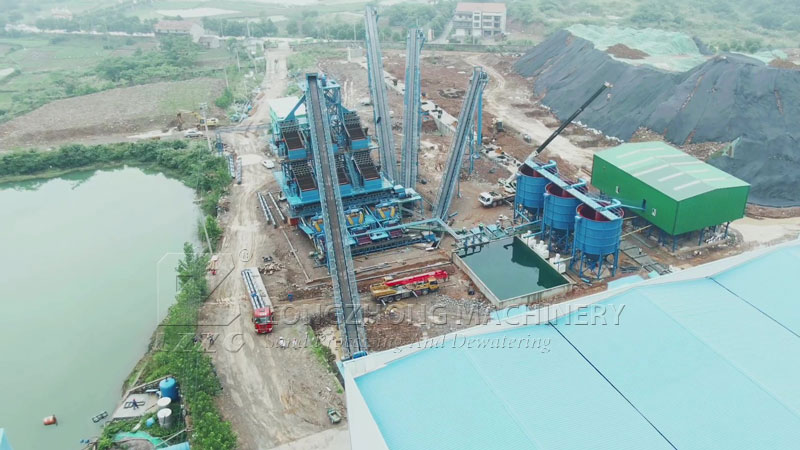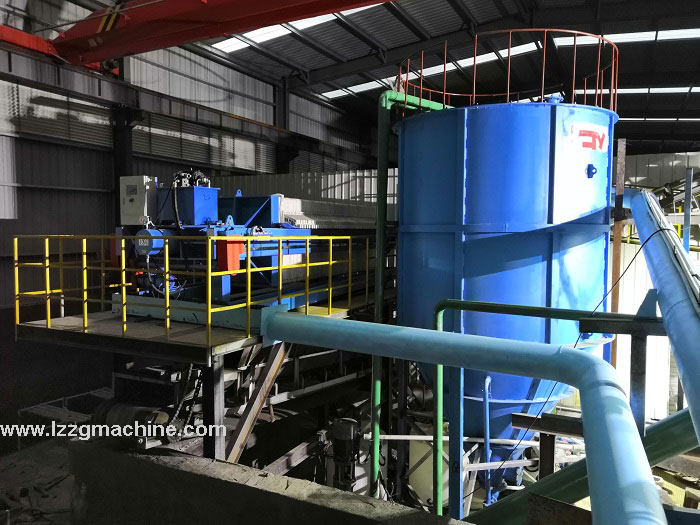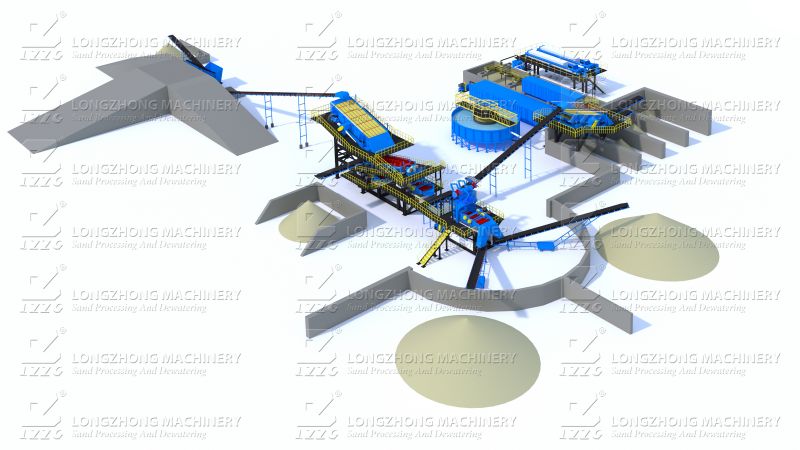Selection of flocculants for ore washing wastewater treatment
 August.05,2021
August.05,2021
Whether it is industrial sludge dewatering or domestic sludge dewatering, not only sludge dewatering equipment such as plate and frame filter press and belt filter press are required. At the same time, flocculants are also needed. Not every flocculant is suitable for all sludge properties. Therefore, in order to ensure the treatment effect, it is necessary to select the flocculant. How to choose a belt filter press?
Determine the nature of sludge
To judge the quality of sludge, whether the sludge is inorganic or organic, choose anionic, cationic, and non-ionic flocculants.
Experimental selection
Do a small experiment to determine the type of flocculant before getting on the machine on site. First, add the same amount of different types of flocculants to the same amount of sludge, the reaction speed is fast, and the filterability is better. Observe the clarity of the supernatant and the size of the sludge flocs. However, usually choose flocculants with clear supernatant and moderate floccules. If the floccules are too large, the mud will run out. Combined with the help of on-site personnel, prevent the flocculant and sludge from reacting incompletely before entering the machine. The longer ones do not require the flocculant for sewage treatment with too fast reaction speed, because the flocculant has enough time to react with the sludge, and at the same time prevents the flocs from being broken again, and can not achieve better sludge pressing effect and sludge discharge. quantity. Therefore, it is very important to choose the correct matching model of the flocculant.

Commonly used flocculants
1. Inorganic flocculant
Inorganic flocculant, mainly refers to inorganic low-molecular flocculant, has many shortcomings in the actual application process, such as large dosage, loose flocs and high water content, difficult separation of solid and liquid, poor treatment effect and operating cost In addition, the residual AI﹢ in the water will cause secondary pollution, affect the normal growth of plants, and endanger human health. Fe﹢ has a corrosive effect on the equipment, causing the color of the treated water to affect the water quality. It is precisely because of these shortcomings of inorganic flocculants that their development is slow.
2. Macromolecular flocculant
Mainly refers to two kinds of inorganic polymer flocculant and organic polymer flocculant.
Inorganic polymer flocculant has the advantages of small dosage, compact flocs, hard to break, non-corrosive, etc., and is the most widely used in water treatment. But it also has some disadvantages, such as difficult degradation and high price. Therefore, the key to the current research and development of inorganic polymer flocculants lies in performance optimization and cost reduction.
Synthetic organic polymer flocculant has the advantages of large relative molecular weight, many functional groups, small dosage, easy solid-liquid separation, wide application range, etc., so it has a wide range of applications. However, the monomers used to prepare synthetic polymer flocculants and their own hydrolysis and degradation products have certain toxicity. For example, the monomer of polyacrylamide, acrylamide, is a carcinogen and neurotoxic. It also has a certain degree of restraint in application and is not suitable. Heavy use and drinking water treatment. And with the increase in the cost of flocculants and strict requirements for their biodegradability, the development of low-cost, superior, and easily degradable natural polymer flocculants has become the focus and direction of current flocculant research.




